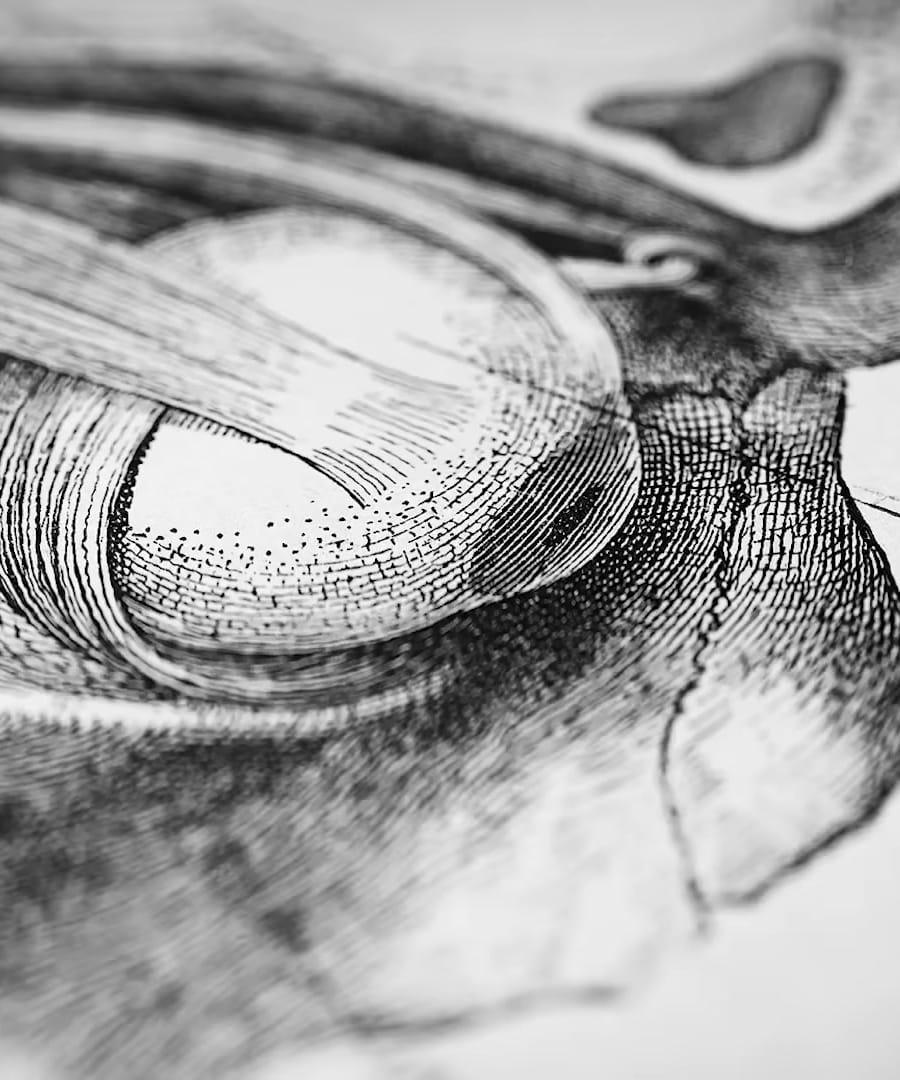Red light
Sources:
Red light therapy has been discussed on the , where it's mentioned for its multiple benefits including enhancing neuronal function when used early in the day, offsetting age-related macular degeneration, and being beneficial for shift workers during the night 1. discussed using red light early in the day to help with neuronal function and late in the day to help stay awake without inhibiting melatonin production or increasing cortisol at night, making it an optimal light source for those needing to work or be alert during the night 1.
Red light is also talked about in the context of eye health, where it can enhance mitochondrial function in the photoreceptors and potentially help maintain vision 2. In terms of skin biology, red light therapy is used for treating dermatologic issues like acne and scarring 3.
In regard to its safety, precautions should be taken not to use excessively bright red light, as it can damage the retinas 4. For specific directed use, certain lights have been cited as having a therapeutic effect on vision, where red lights of 670 nanometers wavelength and near-infrared lights of 790 nanometers have been found beneficial 4.
Red light can be used for various therapeutic purposes spanning from neurobiology, vision health, and skin treatments and should be utilized with advised safety guidelines.
Benefit red light for sleep
Sources:
Red light exposure, particularly in the evening, has been shown to have benefits that may enhance sleep quality. Here's a summary of key insights from the :
-
Dim Red Light: Using dim red light in the evening can be helpful in transitioning to sleep. It doesn't activate the specific retinal neurons (melanopsin retinal ganglion cells) that signal wakefulness and increase cortisol, which is advantageous for sleep initiation and quality 1.
-
Wakefulness Management: For those required to be awake at unusual hours, like shift workers, red light exposure at night can promote alertness without significantly suppressing melatonin production or increasing cortisol levels. This is because red light doesn't activate the same pathways in the brain as blue or white light, which are known to disrupt sleep 2.
-
Reducing Cortisol: Red light at night can help maintain lower levels of cortisol, a hormone that is associated with stress and alertness. High cortisol levels in the evening can disrupt sleep, so using red light can be a strategy to improve the transition to sleep and overall sleep quality 2.
-
Ease of Use: Red light bulbs are widely accessible and can be found at a low cost. They can be used to replace ordinary lights to help manage sleep hygiene without the need for expensive technologies 3.
-
Practical Tips: shared his own practice of switching to red light, such as a red party light type light, in the evening and has noticed an improvement in the depth and duration of his sleep, particularly when in new environments like hotels 4.
Utilizing red light in these ways can be part of a larger set of practices aimed at optimizing sleep hygiene and improving overall sleep health.
-
Red light benefit
Sources:
Red light therapy offers a range of benefits due to its ability to penetrate skin and tissue layers, impacting cellular function in various ways. Key benefits of red light therapy discussed in the include:
-
Cellular Energy Production: Red light can enhance mitochondrial ATP production, the energy currency of the cell, and reduce reactive oxygen species (ROS). This process helps maintain cellular health and can support anti-aging effects, as well as improving neuronal function 1.
-
Synchronizing Circadian Rhythms: Red light in the morning can positively affect mitochondria in retinal cells, which tend to decline with age, potentially improving visual system health. It does not stimulate wake-promoting retinal neurons; thus, it doesn't disrupt circadian rhythms 2.
-
Nighttime Alertness: For those needing to stay awake at night, such as shift workers or caregivers, red light is preferred because it does not inhibit melatonin production or increase nighttime cortisol levels, thus maintaining healthy sleep-wake patterns 3.
-
Skin Health: Red and near-infrared light can penetrate the skin to improve mitochondrial function in skin cells, reducing ROS. This is valuable for wound healing, reducing acne, and even lessening unwanted pigmentation 4.
-
Vision Improvement: Regular exposure to red light, especially for those aged 40 or over, can help counteract age-related macular degeneration and generally maintain better visual function due to its support of photoreceptor mitochondria 4.
-
Accessibility: Red light therapy devices like Juve offer medically recognized benefits, including faster muscle recovery and improved skin health, and are available in various consumer-friendly forms 5.
These insights highlight red light's potential in managing health, especially regarding sleep, visual function, skin health, and overall cellular well-being.
-
Red light sleep
Sources:
Red light has several benefits for sleep, and these are some insights discussed in the :
- Red light is less likely to stimulate wake-promoting retinal neurons during the day, thus it won't disrupt circadian rhythms if used in the morning 1.
- Red light can be beneficial for shift workers or those who need to stay awake at night, as it does not inhibit melatonin production or increase cortisol levels—a stress hormone that, when elevated at night, is associated with sleep disturbances 2.
- Using red lights at night can help individuals remain alert without the adverse effects on melatonin and cortisol, enabling better sleep transition after the task is done 2.
- For those experiencing photophobia or light sensitivity that can lead to headaches or migraines, dim red lights may help reduce the probability of these headaches, thus potentially contributing to better sleep quality 3.
- Implementing red lights, such as red bulbs, in the evening routine can be cost-effective and beneficial to create a relaxed environment that supports sleep preparation, as red light eliminates stimulating blue wavelengths 4.
- himself switched to using a red light at night, finding it effective for improving the depth and duration of his sleep in new environments, such as hotels or Airbnbs 5.
- Even a simple red party light type light can be used, as it seems to reduce the cortisol releasing properties of light at night, making it easier to fall asleep 5.
These points highlight that red light can be used strategically to support sleep hygiene by reducing the impact of more stimulating light wavelengths, particularly at night.
Mouth taping
Sources:
Mouth taping during sleep is discussed in the , particularly focusing on its benefits for improving breathing and sleep quality. Here are some key insights from :
- Cortisol Reduction: Taping the mouth shut during sleep can enhance nose breathing, which increases oxygen intake and reduces apnea. This shift from mouth to nose breathing can potentially lower cortisol levels at night, leading to better hormone balance and sleep 1.
- Nasal Breathing: Mouth taping encourages nasal breathing, which is crucial because it helps increase oxygen levels and reduce carbon dioxide buildup. This can mitigate the negative impact of apnea on hormones like testosterone and estrogen 1.
- Treating Sleep Apnea: For individuals with sleep apnea or tendencies towards snoring, mouth taping offers a zero-cost, behavioral intervention. It's essential for such individuals to deliberate shift to nasal breathing to reduce apnea and snoring 2.
- Improved Nighttime Breathing: Mouth taping can prevent snoring and enhance nasal breathing during sleep, which is ideal unless engaging in heavy exercise or other activities requiring mouth breathing 3.
also notes the importance of shifting to pure nasal breathing during low-intensity activities and exercise, as it can translate to better breathing during sleep. Starting with exercise and then extending to sleep by taping the mouth shut can train the breathing system to prefer nose breathing 3.
However, it's crucial to mention that people with sleep apnea should consult a healthcare provider before making changes to their sleep habits and to determine whether mouth taping or other treatments are appropriate for their condition.
Users who are considering mouth taping should ensure they use a method that still allows them to open their mouth if necessary during sleep, such as positioning the tape in a tab-like formation to remove easily or using specific sleep tape products designed to facilitate this practice. It's always advisable to consult with a healthcare provider before beginning any new sleep intervention, especially if there are underlying health conditions.
Benefits of nasal breathing in comparison to mouth breathing
Sources:
Nasal breathing offers a variety of benefits compared to mouth breathing, and here are some aspects discussed by on the :
- Lung Health and Capacity: Nasal breathing inflates the lungs more efficiently due to the increased resistance it causes, as opposed to mouth breathing. This leads to better lung health as the air is also warmed and moisturized during nasal breathing 1.
- Nitric Oxide Production: Nasal passages produce nitric oxide, a gas that relaxes smooth muscles and aids in dilating blood vessels, thus improving blood flow throughout the body 1.
- Reduced Infections: Mouth breathing can increase the risk of upper respiratory tract infections. Focusing on nasal breathing can help combat colds and flus, as the nasal passages act as better filters for pathogens 2.
- Dental and Facial Structure: Nasal breathing can also lead to positive changes in dental health and facial structure, such as the positioning of the jaw and cheekbones, which can be aesthetically favorable 3.
Additional benefits include:
- Temperature Regulation: By heating the air more efficiently, nasal breathing can reduce the likelihood of cold or flu viruses embedding in the mucosal lining and, therefore, prevent them from infecting the underlying cells 2.
- Respiratory Pathway Health: Deliberate nasal breathing, both day and night, strengthens the respiratory pathways' resistance to viruses 4.
- Improved Memory: Studies suggest that memory recall can be better when information is learned while nasal breathing as opposed to mouth breathing, possibly due to the stronger olfactory signals sent to the brain 5.
Overall, whenever possible, using the nose for breathing is the healthful default recommended by , which can lead to various systemic health benefits, cosmetic improvements, and enhanced cognitive functions.
Vegan diet
Sources:
The has included multiple discussions around diet, including the impact of a vegan diet. While the specifics about a vegan diet vary across different clips, here are some of the key points that were addressed:
-
Diet Personalization: acknowledges that finding the right diet is highly individual. He mentions that some people report positive shifts in mood and affect when transitioning from an omnivorous or vegetarian diet to a vegan diet, mainly due to the increase in dietary fiber. The effects on the gut microbiome from such a transition can be quite dramatic, contributing to these shifts 1.
-
Plant-Based Diet Endorsement: Dr. Justin Sonnenburg has remarked on the abundant data supporting the health benefits of a plant-based diet, particularly for people of European ancestry. He suggests that a high fiber plant-based diet is often sufficient for maintaining good health, without the need to consider additional dietary rules. This aligns with simple guidelines like eating mostly plants and limiting processed foods for most individuals 2.
-
Protein Options for Vegans: Layne Norton discusses protein sources for vegans, indicating that soy and potato protein isolate are good options due to their amino acid content. He also mentions the development of non-animal-based whey protein, providing vegans with more choices for high-quality protein 3.
In summary, the acknowledges the individuality of dietary choices and doesn't endorse a one-size-fits-all approach, but it does recognize the potential benefits of a plant-based or vegan diet in terms of gut health, mood improvement, and overall health, suggesting that the impact of dietary choices is complex and should be personalized based on an individual's unique needs and conditions.
-
What are the health benefits of cold showers?
Sources:
Exposure to cold through activities like cold showers has been discussed in various contexts on the . Cold exposure can induce several health benefits when applied appropriately:
-
Enhanced Recovery: Cold exposure after intense training may reduce muscle soreness and improve the effectiveness of the workout, leading to quicker recovery and potential performance benefits 1.
-
Metabolism Boost: There's evidence suggesting that cold showers and ice baths can increase metabolism and activate brown fat, which is a type of fat that generates heat and helps you burn calories 2
-
Reduction in Inflammation: Deliberate cold exposure might reduce inflammation, which can have widespread beneficial effects on health 3.
-
Mood and Focus: The release of catecholamines, such as dopamine, norepinephrine, and epinephrine during cold exposure, can improve mood and increase alertness 4.
-
Fat Loss: There have been some indications that deliberate cold exposure can reduce waist circumference and abdominal fat, although the mechanisms and consistency of these effects are still a topic for further exploration 3.
-
Heat Tolerance and Performance: Before aerobic activity, cold showers could increase the body’s capacity to absorb excess heat and improve athletic performance 5.
It's important to remember that these benefits can only be realized with the appropriate use of cold exposure methods and that the body's response to cold exposure may differ between individuals. Additionally, people with certain health conditions should proceed with caution or discuss it with their healthcare providers before attempting cold exposure.
RELATED QUESTIONS-
Purify water
Among the podcasts retrieved, none appear to explicitly discuss the topic of water purification. While podcasts like the and discuss various health topics that may sometimes include hydration and water intake, the specific details on purifying water are not within the provided podcast information.
If you are looking for knowledge on how to purify water, it might be more useful to consult scientific literature or official guidelines from health authorities that specialize in this area, as Huberman Lab does not seem to have covered this topic directly.
RELATED QUESTIONSWater
Sources:
The provides an in-depth discussion on the subject of water, covering its chemical composition, physical properties, biological importance, and even the debates surrounding different types of water consumption. Presented by , a neurobiologist and ophthalmologist at Stanford School of Medicine, the podcast addresses a variety of topics related to water.
Here is a brief summary of key insights on water from the podcast:
-
The Properties of Water: Explores how water's structure, being composed of two hydrogen atoms and one oxygen atom, allows for its various properties, including the ability to bind through covalent bonds due to its polarized nature 1.
-
The Phases of Water: Discusses how water can exist in liquid, gaseous, and solid forms and explains the implications of this for biological systems 2.
-
Structured Water: Details a debated topic known as "structured water," which is argued to be a fourth phase of water with unique properties, and its potential health implications 3.
-
Water and Cells: Describes how cells utilize water and the mechanisms by which water enters the cells, including the role of diffusion and aquaporin channels 4.
-
The Importance of Water: Emphasizes the crucial role of water in the body and how temperature and pH can affect water's utilization in cellular processes 5.
-
Clean Water Concerns: Raises concerns about contaminants in tap water, particularly disinfection by-products that could influence water quality and health. Advice is provided on checking water quality in your local area 6.
-
Water Hydration: Ends with a discussion on the importance of hydration for general health, how to determine the proper amount of water intake, and guidance on the practice of hydration 7.
In this particular episode titled “How to Optimize Your Water Quality & Intake for Health” from the , various aspects of water from its significance in human biology to practical tips on water intake are considered, and the episode goes to great lengths to demystify the science of water which may often come across as straightforward but is, in fact, quite nuanced 8.
-
Red light
Benefit red light for sleep
Red light benefit
Red light sleep
Mouth taping
Benefits of nasal breathing in comparison to mouth breathing
Vegan diet
What are the health benefits of cold showers?
- RELATED QUESTIONS
Purify water
- RELATED QUESTIONS
Water


































